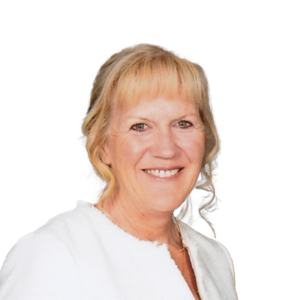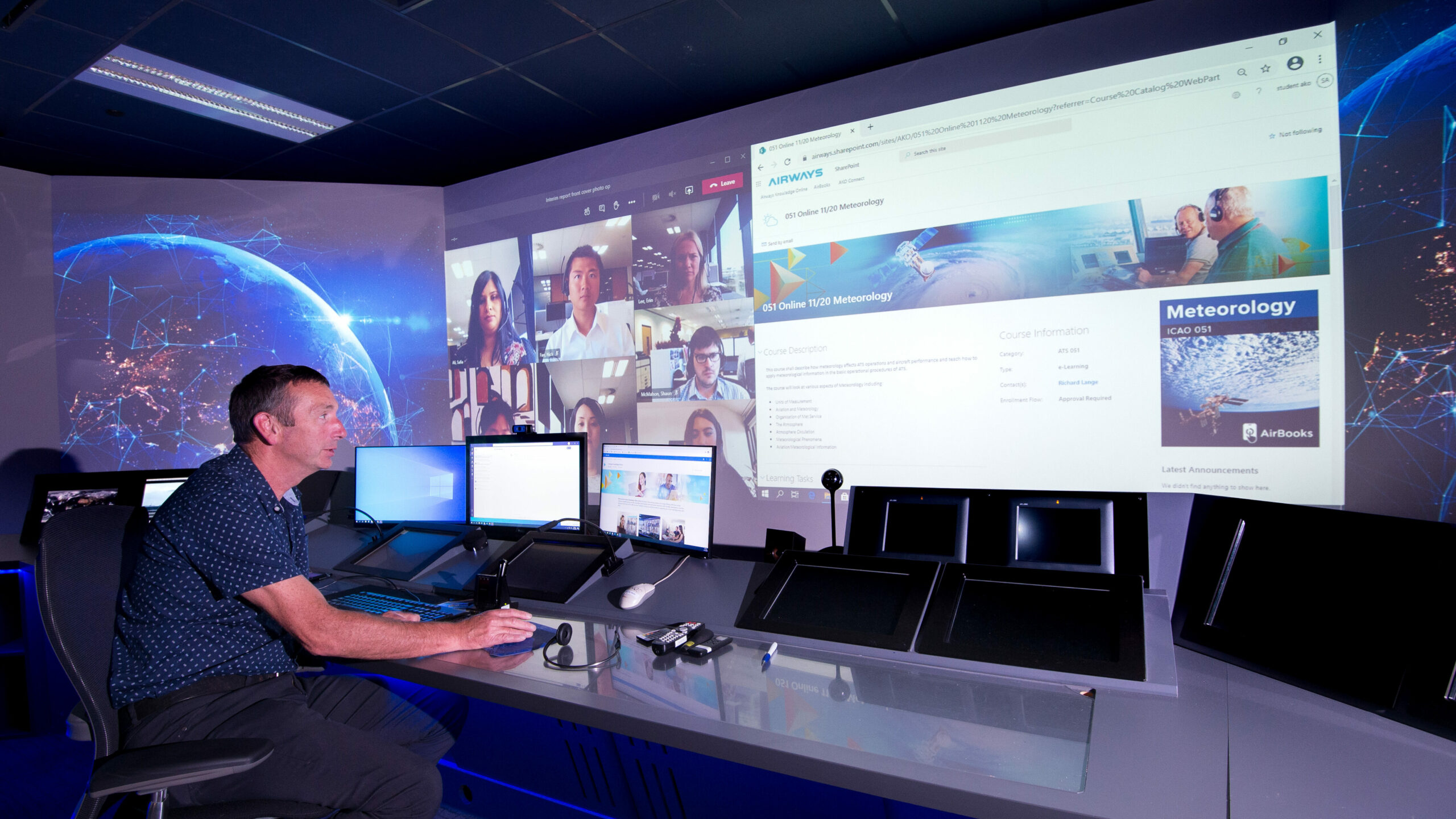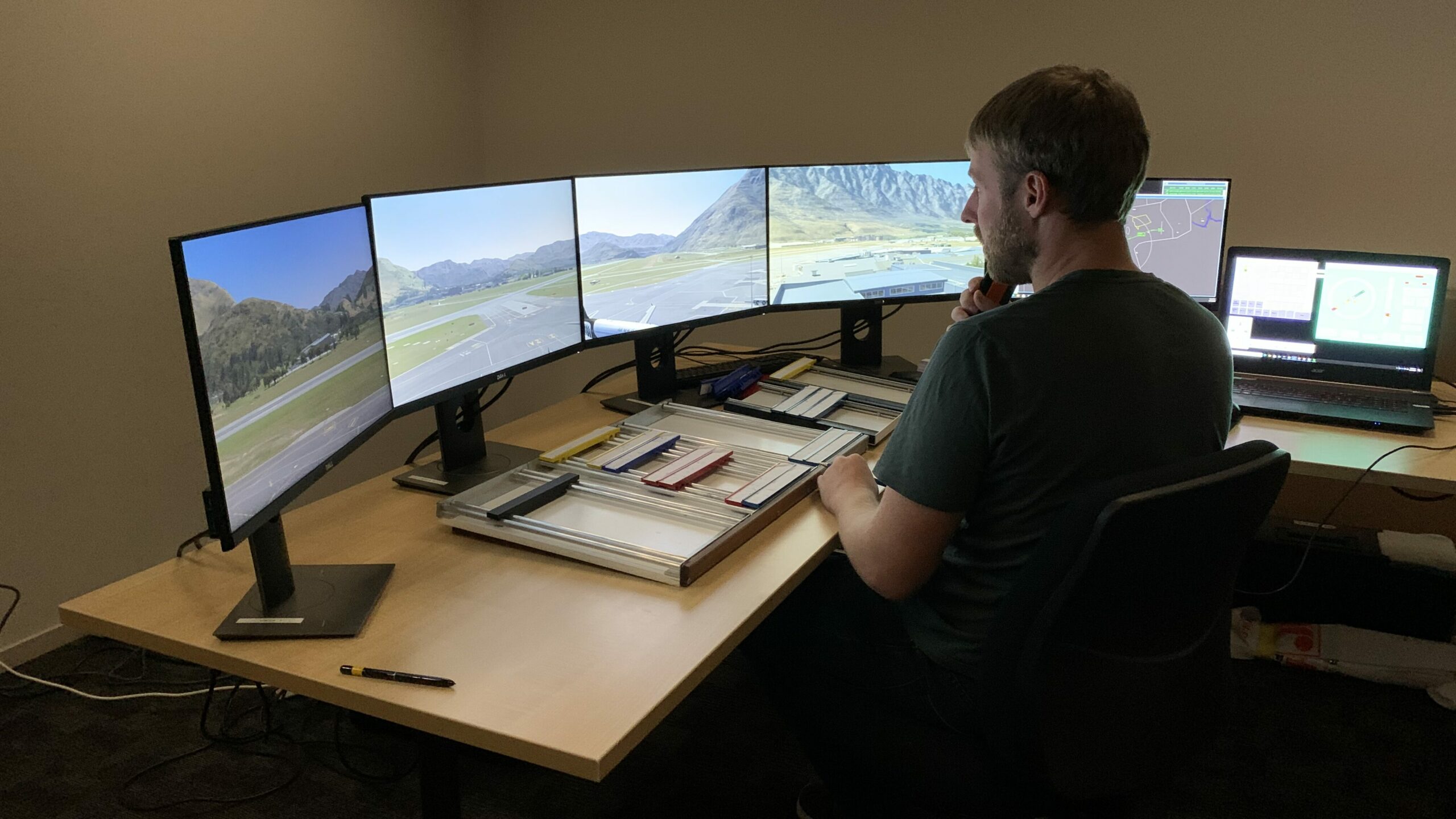Home News & updates Article Working remotely

An interview with Airways International CEO Sharon Cooke, published in Air Traffic Management magazine, Issue 3 2022.
Q. What are you most proud of related to the way Airways International worked during the pandemic to ensure continuity of staff levels?
A. Our team at Airways International Ltd (AIL) needed to innovate to continue to deliver training and simulation contracts, after Covid-19 caused rapid and unprecedented disruption to our industry and our business. It was a challenging time, and our team stood up to the numerous challenges facing them – pivoting to reimagine our business from a predominantly face-to-face delivery model to fully remote.

We launched the AKO (Airways Knowledge Online) virtual academy to enable aviation students across the globe to learn with us remotely; and to support delivery of a large simulator contract across 12 sites throughout Norway by remotely assisting the Avinor team with hardware installation, training, and remote deployment of software. With Covid-19 hampering our ability to visit our customers face-to-face or at industry events, we also ramped up our digital marketing capabilities to promote our products and services via digital channels, to support our sales efforts.
Due to the location of AIL’s head office and facilities in Christchurch, New Zealand, and our distance from many of customers – particularly those in Europe and the Middle East – we have previously faced some challenges as a provider of services for the global air traffic management sector.
Q. What’s different about AIL’s role in air traffic management services in your region? Do you have specific challenges due to location, climate, topography, etc?
A. Connecting face-to-face with our customers, students and industry colleagues is important to us for building trusted relationships and sustainable customer partnerships. This involves extensive global travel by our New Zealand based team – so when the Covid-19 severely disrupted international travel, our ability to conduct business face-to-face was significantly impacted.
We have now pivoted our delivery model so that distance is no longer a barrier, with training delivery and simulator installations conducted remotely. Three simulator contracts have recently been delivered by our team from New Zealand, working collaboratively with customers in Malaysia, Puerto Rico and Norway.
Q. Can you share more information regarding the types of services that you provide to ANSPs in other regions? (NOTE: you mention 65 in your countries in your brochure, it would be great to get an overview as to the types of things you are doing and how they might align/change by region)
A. AIL is a technology focused organisation, offering a portfolio of products and services for air navigation service providers and aviation organisations around the globe. These include:
AIL works mainly with ANSPs and airports in Asia, the Pacific and Middle East regions and increasingly in Europe. As an ANSP we understand the problems our customers are trying to solve and work closely with them to improve safety and ensure their success. Our overall aim is to be a trusted and respected provider of ANS products and services to the aviation industry.
Q. Can you tell us about the Sim in a suitcase? How it came to be and is currently in use?
A. The TotalControl Sim-in-a-Suitcase is a desktop simulator with a focus on portability and ease of transport. This mobile simulator has been designed to help ANSPs deliver remote training across their regions, and has been particularly effective during travel and border restrictions.
Airways has deployed mobile simulators to several regional towers over the past two years for simulator training. It’s a sustainable, cost-effective and efficient sim training solution – controllers only need to take hours, not days off the roster, and travel costs are greatly reduced.
Avinor in Norway and SAERCO in Spain are two other ANSPs who have deployed TotalControl mobile simulators for remote training. SAERCO’s Desktop simulators are located in Madrid and Fuerteventura (Canary Islands)– all managed from a central sim piloting hub in Madrid, while Avinor’s six mobile simulators are deployed at regional towers with simulator pilots operating them from a centralized hub.

Q. The integration of ATM and UTM continues to come closer and closer and more ANSPs are getting involved directly in this topic. Can you highlight some of the key achievements during the course of the last year related to AirShare success stories and the support of the U-Space model?
A. AirShare has been used in a live operational environment by Airways since 2014. As the UTM industry has evolved over that time, so has the AirShare product – our team continues to develop the platform to meet the needs and requirements of ANSPs.
AirShare has been developed with three core modules – an Airspace Manager dashboard for use by air traffic controllers; an Integrator module where we’ve developed APIs to integrate AirShare with other systems and share our data; and our public pilot services in the form of a website and app for unmanned aircraft (UA) pilots to log flights and access airspace maps. Development of APIs was an important step – by designing AirShare to integrate with other systems, we’re creating an environment where the UA industry can innovate using the services and data provided through AirShare.
Digital authorisations for UA flights has also been introduced into AirShare this year, enabling UA operators to gain digital clearance for launching flights rather than via a phone call to the control tower. This was successfully trialled in one control zone in New Zealand, and is now being progressively rolled out throughout the country.
Q. Collaboration has been a high priority topic over the last few years and I know that remotely providing services has been a key topic for Airways these last years. Can you discuss any examples of new ways that you’ve collaborated with partners/customers during this time and how it will impact your way of working going forward?
A. Developing and maintaining partnerships with global aviation providers who can complement our service offerings is a key element of Airways International’s strategic focus to build a sustainable global business through increase in scale, reach and market share.
A good example of this are the partnerships we’ve established through our subsidiary Aeropath, to deliver on airspace design contracts in Europe and Asia Pacific.
We’ve partnered with not-for-profit U.S. based organisation MITRE and world-leading aviation consultancy To70 in Europe to carry out several complex airspace design projects, where we are jointly delivering efficient and safe airport operations in some of the world’s busiest and most complicated airspace.
With UK-based specialist aviation consultancy Osprey, we’re collaborating to deliver a contract with the UK Ministry of Defence to provide military instrument flight procedures across 27 military aerodromes. These types of collaborative partnerships are enabling us to work on high profile contracts globally, particularly in the Europe and Asia Pacific regions.
Q. Is there anything else you’d like to tell our readers that we haven’t asked about in the prior questions?
With a mission to be a leading outsourced provider of digital products and services to the aviation community, we have a strong focus on valuing our customers, helping to solve their problems and providing great customer service.
We’ve built a reputation for being easy to work with, responsive and a trusted provider. Leveraging Airways’ ANSP expertise and learning from real-life ANSP implementations, we’re focused on developing solutions with a strong technology focus that address industry challenges.